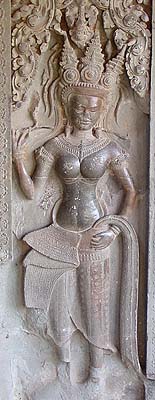
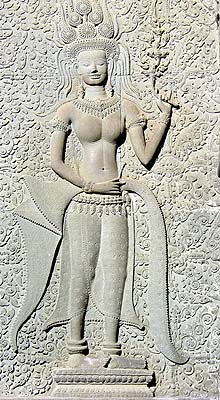
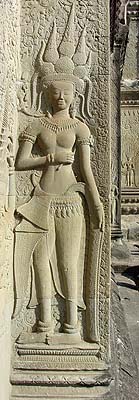
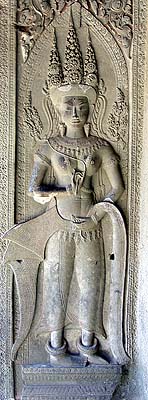




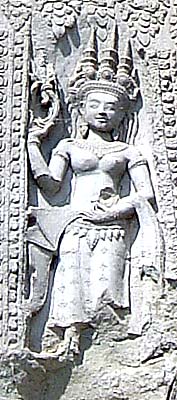
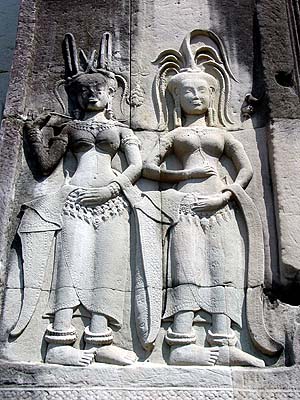

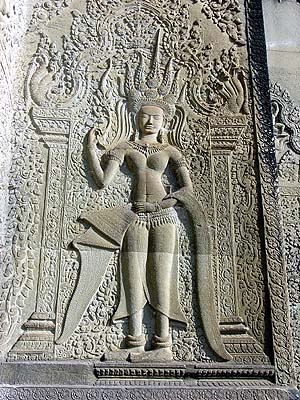
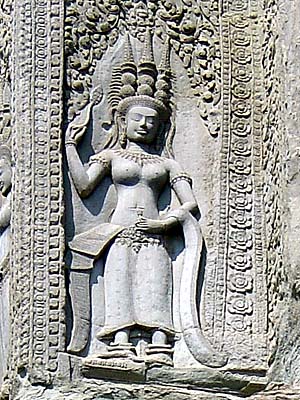




|





|


|


|

|
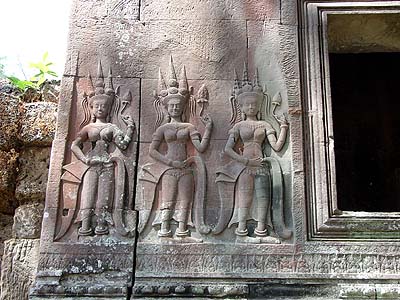
|
Angkor Wat
Hundreds of sculpted apsarasas appear in shallow carved relief on the walls of the temple. The heavenly maidens are depicted, in what was presumably the standard court costume of the day, but with a pleasing variety of facial features and expressions. They most often appear singly, less often in groups of two, three, or more.
The celestial images face the viewer, their feet pointing politely (if oddly) to one side. The legs may be stiff pipestems or slightly flexed. Head ornament includes a crown, with three or five points, above several rope-like strands of braided hair. Large plugged earrings, multi-stranded necklace, bracelets on upper arm and wrist, decorated belt, and anklets adorn the body. The upper torso is bare. The lower body is veiled in a light, transparent, patterned shift with pleated folds on one side and a curving swag on the other. Typical gestures include grasping the swag, or holding a lotus stem.
Other things to look for, in the examples above, include the fine carving behind some of the figures, and differences in their crowns (no two are exactly alike). The second figure from the left, in the topmost row, is a rarity: the only one at Angkor Wat with visible teeth. This sculpture is found on the western gopura. The remaining carvings come from many different locations in the temple including the gates, walls, and towers.
Apsarasas are universally described as "heavenly dancers." Does it not seem odd, then, that none of these examples are actually posed in a dancing posture?

|